If the master cylinder piston jams (due to corrosion, breakage of the return springs), incomplete release of the brakes on all wheels may occur
A defect such as “failure” of the brake pedal may also occur
Rebuilding the master cylinder often does not lead to the desired results, so it is recommended to replace the master cylinder assembly.
Replacing the brake master cylinder
Remove the battery and the air supply hose to the throttle body.
After unscrewing the tank cap, remove the cap along with the liquid level sensor. Use a rubber bulb to remove liquid from the tank.
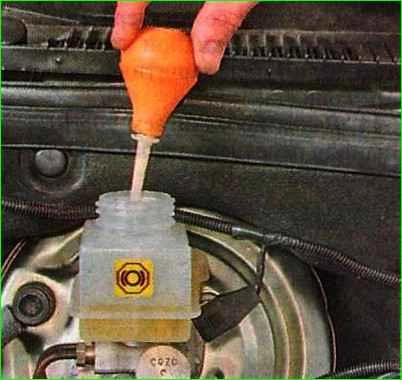
Use a rubber bulb to remove liquid from the tank.
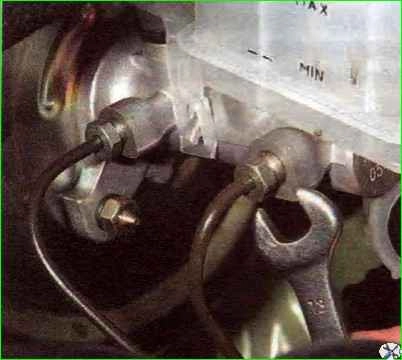
Using a 13mm wrench or a special wrench for brake pipes, unscrew the fittings of the two brake pipes.

We remove the tube tips from the holes of the master brake cylinder.
Using a 13mm socket, unscrew the two nuts securing the cylinder to the vacuum brake booster

Remove the master brake cylinder assembly with the reservoir.
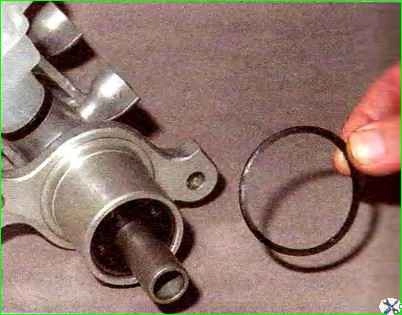
The connection between the master cylinder and the vacuum brake booster is sealed with a rubber ring.
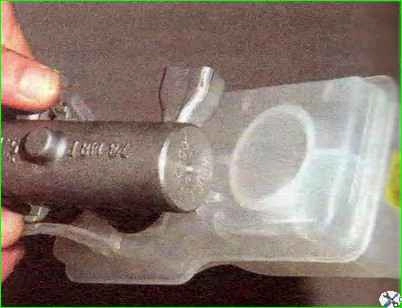
To remove the tank, press out the two tabs of the tank body and remove them from the bosses of the cylinder body.
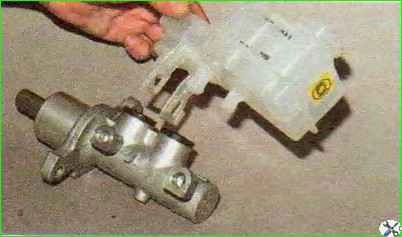
Overcoming the resistance of the rubber sealing bushings, remove the tank fittings from the cylinder holes and remove the tank

If it is necessary to replace the sealing sleeve, remove it from the cylinder body
Assemble the master brake cylinder with the reservoir and install it in reverse order.
Bleeding the hydraulic brake system.





